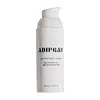What's inside
What's inside
 Key Ingredients
Key Ingredients

 Benefits
Benefits

 Concerns
Concerns

No concerns
 Ingredients Side-by-side
Ingredients Side-by-side

Water
Skin ConditioningCarthamus Tinctorius Seed Oil
MaskingDicaprylyl Carbonate
EmollientGlycerin
HumectantBis-Diglyceryl Polyacyladipate-2
EmollientGlyceryl Oleate Citrate
EmulsifyingCetearyl Alcohol
EmollientKaempferia Parviflora Rhizome Extract
AntioxidantCucumis Sativus Fruit Extract
EmollientOryza Sativa Bran Wax
Skin ConditioningCarbomer
Emulsion StabilisingTocopheryl Acetate
AntioxidantXanthan Gum
EmulsifyingPentaerythrityl Tetra-Di-T-Butyl Hydroxyhydrocinnamate
AntioxidantHelianthus Annuus Seed Oil
EmollientPropanediol
SolventEthylhexylglycerin
Skin ConditioningOleic Acid
EmollientPolysorbate 20
EmulsifyingPropylene Glycol
HumectantSodium Benzoate
MaskingTocopherol
AntioxidantSodium Hydroxide
BufferingPentylene Glycol
Skin ConditioningPhenethyl Alcohol
MaskingWater, Carthamus Tinctorius Seed Oil, Dicaprylyl Carbonate, Glycerin, Bis-Diglyceryl Polyacyladipate-2, Glyceryl Oleate Citrate, Cetearyl Alcohol, Kaempferia Parviflora Rhizome Extract, Cucumis Sativus Fruit Extract, Oryza Sativa Bran Wax, Carbomer, Tocopheryl Acetate, Xanthan Gum, Pentaerythrityl Tetra-Di-T-Butyl Hydroxyhydrocinnamate, Helianthus Annuus Seed Oil, Propanediol, Ethylhexylglycerin, Oleic Acid, Polysorbate 20, Propylene Glycol, Sodium Benzoate, Tocopherol, Sodium Hydroxide, Pentylene Glycol, Phenethyl Alcohol
Water
Skin ConditioningGlycerin
HumectantCalycophyllum Spruceanum Bark Extract
Skin ConditioningSorbitan Olivate
EmulsifyingCetearyl Olivate
Squalane
EmollientCarapa Guianensis Seed Oil
Skin ConditioningVitis Vinifera Seed Oil
EmollientPentaclethra Macroloba Seed Oil
EmollientRosa Canina Fruit Oil
EmollientPrunus Domestica Seed Oil
Skin ConditioningCaprylhydroxamic Acid
Glyceryl Caprylate
EmollientDecapeptide-52
Skin ConditioningHyaluronic Acid
HumectantSodium Hyaluronate
HumectantSodium Hyaluronate Crosspolymer
HumectantNiacinamide
SmoothingAllantoin
Skin ConditioningBentonite
AbsorbentTocopheryl Acetate
AntioxidantTocopherol
AntioxidantCellulose
AbsorbentCetyl Palmitate
EmollientSorbitan Palmitate
EmulsifyingXanthan Gum
EmulsifyingPotassium Sorbate
PreservativePhenoxyethanol
PreservativeSorbic Acid
PreservativeCaprylyl Glycol
EmollientTetrasodium Glutamate Diacetate
Avena Sativa Peptide
Skin ConditioningWater, Glycerin, Calycophyllum Spruceanum Bark Extract, Sorbitan Olivate, Cetearyl Olivate, Squalane, Carapa Guianensis Seed Oil, Vitis Vinifera Seed Oil, Pentaclethra Macroloba Seed Oil, Rosa Canina Fruit Oil, Prunus Domestica Seed Oil, Caprylhydroxamic Acid, Glyceryl Caprylate, Decapeptide-52, Hyaluronic Acid, Sodium Hyaluronate, Sodium Hyaluronate Crosspolymer, Niacinamide, Allantoin, Bentonite, Tocopheryl Acetate, Tocopherol, Cellulose, Cetyl Palmitate, Sorbitan Palmitate, Xanthan Gum, Potassium Sorbate, Phenoxyethanol, Sorbic Acid, Caprylyl Glycol, Tetrasodium Glutamate Diacetate, Avena Sativa Peptide
 Reviews
Reviews

Ingredients Explained
These ingredients are found in both products.
Ingredients higher up in an ingredient list are typically present in a larger amount.
Glycerin is already naturally found in your skin. It helps moisturize and protect your skin.
A study from 2016 found glycerin to be more effective as a humectant than AHAs and hyaluronic acid.
As a humectant, it helps the skin stay hydrated by pulling moisture to your skin. The low molecular weight of glycerin allows it to pull moisture into the deeper layers of your skin.
Hydrated skin improves your skin barrier; Your skin barrier helps protect against irritants and bacteria.
Glycerin has also been found to have antimicrobial and antiviral properties. Due to these properties, glycerin is often used in wound and burn treatments.
In cosmetics, glycerin is usually derived from plants such as soybean or palm. However, it can also be sourced from animals, such as tallow or animal fat.
This ingredient is organic, colorless, odorless, and non-toxic.
Glycerin is the name for this ingredient in American English. British English uses Glycerol/Glycerine.
Learn more about GlycerinTocopherol (also known as Vitamin E) is a common antioxidant used to help protect the skin from free-radicals and strengthen the skin barrier. It's also fat soluble - this means our skin is great at absorbing it.
Vitamin E also helps keep your natural skin lipids healthy. Your lipid skin barrier naturally consists of lipids, ceramides, and fatty acids. Vitamin E offers extra protection for your skin’s lipid barrier, keeping your skin healthy and nourished.
Another benefit is a bit of UV protection. Vitamin E helps reduce the damage caused by UVB rays. (It should not replace your sunscreen). Combining it with Vitamin C can decrease sunburned cells and hyperpigmentation after UV exposure.
You might have noticed Vitamin E + C often paired together. This is because it is great at stabilizing Vitamin C. Using the two together helps increase the effectiveness of both ingredients.
There are often claims that Vitamin E can reduce/prevent scarring, but these claims haven't been confirmed by scientific research.
Learn more about TocopherolTocopheryl Acetate is AKA Vitamin E. It is an antioxidant and protects your skin from free radicals. Free radicals damage the skin by breaking down collagen.
One study found using Tocopheryl Acetate with Vitamin C decreased the number of sunburned cells.
Tocopheryl Acetate is commonly found in both skincare and dietary supplements.
Learn more about Tocopheryl AcetateWater. It's the most common cosmetic ingredient of all. You'll usually see it at the top of ingredient lists, meaning that it makes up the largest part of the product.
So why is it so popular? Water most often acts as a solvent - this means that it helps dissolve other ingredients into the formulation.
You'll also recognize water as that liquid we all need to stay alive. If you see this, drink a glass of water. Stay hydrated!
Learn more about WaterXanthan gum is used as a stabilizer and thickener within cosmetic products. It helps give products a sticky, thick feeling - preventing them from being too runny.
On the technical side of things, xanthan gum is a polysaccharide - a combination consisting of multiple sugar molecules bonded together.
Xanthan gum is a pretty common and great ingredient. It is a natural, non-toxic, non-irritating ingredient that is also commonly used in food products.
Learn more about Xanthan Gum